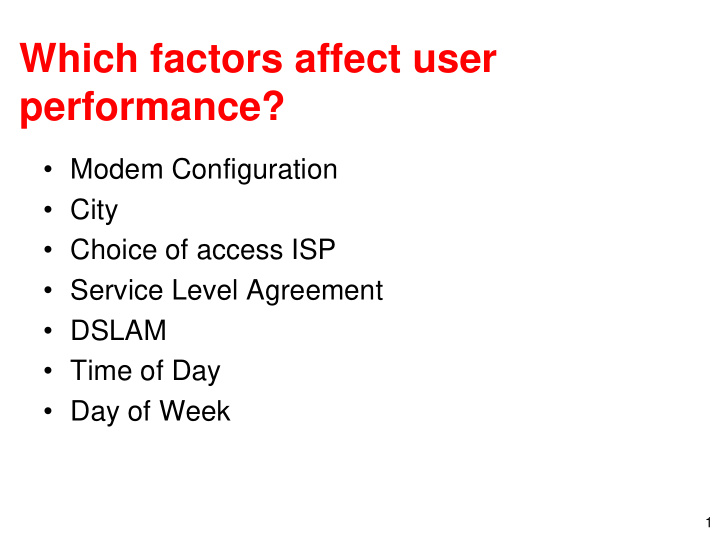



Which factors affect user performance? • Modem Configuration • City • Choice of access ISP • Service Level Agreement • DSLAM • Time of Day • Day of Week 1
Effects of Modem Configuration Users who have configured fastpath achieve better download speeds. 2
Effect of City A user’s city affects download time significantly. These differences do not correlate with differences in round-trip time. 3
Effect of ISP Users in the same city and comparable SLAs can experience widely varying performance, for different ISPs. 4
Effect of Time of Day Download speeds vary by time of day. 5
Ranking of Features • Question: Which of the above features are most important in predicting user performance. • Approach: Use ensemble learning to train a predictor of user performance, using these features as input. • Output: predictor and ranking of features 6
Ensemble Learning: RuleFit 7
Ranking of Feature Importance • RTT is most important predictor • DSLAM, City, SLA are also important • Temporal features are considerably less important 8
How does performance correlate across time? • Question: When groups of users experience performance fluctuations, what do they share in common? • Approach: Apply cross-correlation and pairwise hierarchical clustering to group users. 9
Results: Correlated Members Users from the same ISP experience similar fluctuations, even if they are in different cities. 10
Conclusion • So far, mostly expected results – ISPs often do not meet their SLAs – SLA is a good indicator of performance – ISP is a good predictor of performance fluctuation • Next steps – Deployment: gather more detailed measurements – Application: Can correlation help identify root cause? 11
Recommend
More recommend